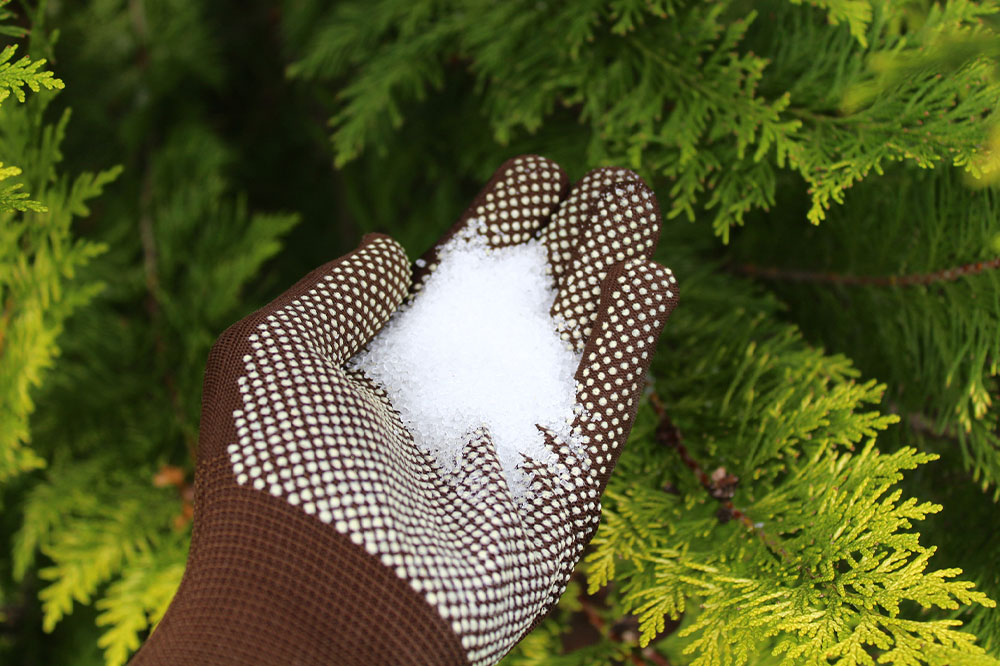Benefits of Using Epsom Salt as Fertilizer in the Garden
Organic gardening, as the name suggests, is a way of gardening that doesn’t rely on agricultural chemicals like pesticides. Epsom salt has been becoming increasingly popular as an organic choice among many gardeners. Also known as magnesium sulfate, Epsom salt has several benefits, including boosting flower blooming, working as a fertilizer, improving chlorophyll production, and enhancing leaf color.

Ways to use Epsom salt in the garden
The ratio of Epsom salts fertilizer in the garden will vary depending on the application method and the plants you are treating.
- Epsom salt supplement can be used in the garden and on indoor plants. Rinse your plants once monthly with two teaspoons of Epsom salt per gallon of water between usual waterings. Scatter half a cup of Epsom salts around the base of plants like roses to facilitate new growth and blossoming.
- Shrubs benefit from Epsom salt feeding once a month, while trees benefit from Epsom salt treatments three times a year.
- In gardens, Epsom salts are commonly used as a foliar spray. Mix the required amount of Epsom salt with water and spray this solution over the plant’s leaves. Repeat this process, first in early spring as new leaves grow and then again after the flowers bloom.
- Epsom salt solution can be applied as a soil drench to irrigate the plant at the soil level. Epsom salts can be added directly to the soil before planting or worked into the soil without being diluted with water first.
Advantages of using Epsom salt fertilizer for plants
Epsom salt, when properly added to the soil, can boost the growth of your garden plants. It is because it increases the concentration of magnesium, one of the essential minerals required by garden soil. Some advantages of using Epsom salts fertilizers in your garden are listed below.
Facilitating growth for plants
Magnesium is essential for plants due to its capacity to encourage chlorophyll production. Chlorophyll is a pigment that provides a green color to plant leaves and encourages the plant’s growth. Magnesium supplementation aids plant development by reinforcing cell walls and boosting seed germination.
Preventing root shock
During transplantation, the roots of seedlings or older plants may become stressed, restricting their growth. Root stress can cause plants to wilt or yellow their leaves. Adding Epsom salt activates chlorophyll production, allowing better nutrient absorption and facilitating healing.
Better flavor
As a plant’s chlorophyll level grows, it generates more sugar, resulting in sweeter and more delicious fruits and vegetables.
Repelling pests
To repel insects such as beetles, mix one cup of Epsom salt with five liters of water and apply it to plants.
Epsom salt for potted plants
Epsom salt can be easily applied to the potted plants around your house and porch as part of one’s routine. For potted plants, combine two teaspoons of Epsom salt with one gallon of water and use this solution once a month instead of regular watering.
As natural salt can accumulate in the soil and clog the plant’s root cells, adding Epsom salt solution to houseplants that have been potted for a long time will help. A newly potted plant can also benefit from it because it can acquire the right amount of nutrients in its early stages of growth. Keep houseplants in bright locations unless otherwise specified because most plants require adequate sunlight. Epsom salt can increase fruit or vegetable yield. It primarily benefits flat dwellers and those with limited personal garden space, as it is an excellent method for growing food quickly and successfully, even from a balcony.
Tips for using Epsom salt in your garden
Here are a few tips and compositions for using Epsom salt, depending on your garden space and type.
- Add one cup of Epsom salts to the soil before planting for every 100 square feet of new garden space.
- Add one tablespoon of Epsom salts to one gallon of water after sowing to enhance germination.
- Use three pounds of Epsom salts for every 1,250 square feet of turf, then thoroughly water.
- Add one-half cup of Epsom salts to the soil at the base of each bush to encourage multiple roses and vibrant foliage. For best results, use the therapy early in the flowering season, when buds are just beginning to open.
- When it comes to shrubs, spread about a spoonful of Epsom salts in the root zone of plants like azaleas and rhododendrons every two to four weeks.
- To give tomatoes and peppers a healthy start when transplanting seedlings, sprinkle a teaspoon of Epsom salts in the bottom of each hole.
- Once tomato plants have bloomed and begun to bear fruit, spray them regularly with a foliar solution comprising one tablespoon of Epsom salts and one gallon of water.
- Epsom salts also help ward off slugs and snails away from plant bases.











